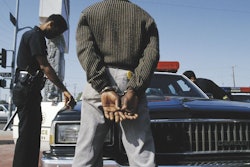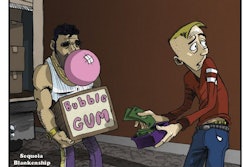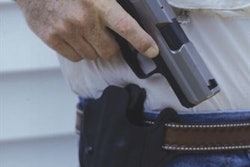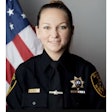Car stops are a daily occurrence for most patrol officers. Whether in a big city or out in the country, a traffic stop is at the very root of what we do.
And like most activities that we consider “routine,” we can get a little complacent on traffic stops and put ourselves on “auto pilot” without even realizing it. That’s a bad move on our part.
Car stops can be one of the most dangerous types of police operations. And they are especially dangerous if the officer isn’t thinking or if he or she is too comfortable with it.
Fortunately, there are some easy ways to make vehicle stops a lot safer. Most of us have learned them very early in our careers, but all of us fall prey to forgetting them from time to time. So take this as a gentle reminder of how to enhance your safety during a traffic stop.
Evaluate During Your Approach
Watch the driver and all occupants while you walk up to the car. Pay special attention to their movements. Are they looking back at you? Are they fidgeting around under the seat? These actions are red flags that should shoot up in your mind when you see them. They are in one place not moving, you are mobile. Use that to your advantage.
If necessary, consider a passenger side approach. This usually takes them by surprise as most people expect officers to make the normal driver’s side approach. Plus, you can see a lot more of the car and keep a better eye on the passengers when you do this, and avoid other traffic at the same time. Some departments believe in the passenger-side approach so much, that they make it mandatory for all their officers.
Watch Their Hands
Hands are what hurt you, so keep an eye on theirs, especially when you tell them to get their license and paperwork. You are inviting them to open the glove box or to fish around just about anywhere in their vehicle that they want, so keep an eye on them. They know their car and what’s in it, you do not.
And watch the passengers. On most stops, the passenger will just sit there while the driver retrieves the paperwork and does all the talking. If the passenger starts to go for the glove box or under a seat, that should send up alarm bells for you to watch him or her closer. Also, stay behind the window post between the front and back seat. This will give you cover and an escape route if needed, and it will prevent the driver from using the car door as a weapon. It also gives you a great view of both the front and backseats.
Keep Them in the Car
By keeping the driver and passengers in the car, you keep the tactical advantage. You are mobile while they are not. Plus, to hurt you, they will need to get out of the car first, which gives you plenty of time to react. Some officers like the driver to get out so they don’t have access to any potential weapons in the car. While this is a good point; consider this: They still may have the weapon on them when they get out, and now they won’t give you as much, if any warning if they want to use it. Keeping them inside the car gives an officer the tactical advantage if the occupants choose to get out.
Most departments have regulations mandating that you wait for backup before you execute a search but, even if yours doesn’t, call for backup anyway. If you are going to pull someone out of the car and/or search the vehicle always have a backup officer.
The backup officer’s sole job is to watch your back and watch the occupants while they are out of the car. There is no more vulnerable of a position than an officer sticking his or her head in a car to search and leaving their backside (gun belt and all) sticking out for all to see. So make sure you have a backup officer at the scene to watch the driver and occupants while you do your search.
Use All of Your Advantages
If it’s dark out, use both of your spotlights to light up their vehicle. Using both lights, also gives the illusion that you are a two-person car, even if you are a solo officer. Try to hit the rear-view mirror with your spotlight. That will prevent the driver from watching your approach. If the driver is acting a little suspicious, have him or her turn off the car. If you’ve ever had a driver take off on you when you were at their window, you’ll know the value of this tactic. Never reach into the car to turn off the ignition of an uncooperative driver. Some officers have been dragged to their deaths while trying to grab keys.
It also makes sense to tell the driver why you stopped him right away at the stop. You never know what is going through his mind…or what he thinks you know.
Most criminals will think you know what they just did and figure that’s why you stopped them. Letting a drive know right away that you stopped him for a traffic infraction will allow you to find out his history on your own in the safety of your car.
Trust Your instincts
Every officer has a great gift from God known as his or her sixth sense. Lesson for the day: listen to it! Trust your instincts when they send up those red flags. Use them to your advantage instead of getting complacent. That’s what they’re designed to do.
Remember, you have no idea who this person is that you just stopped. But you have all the tools and tactics on your side from the moment your lights are activated, make sure you use each and every one.















